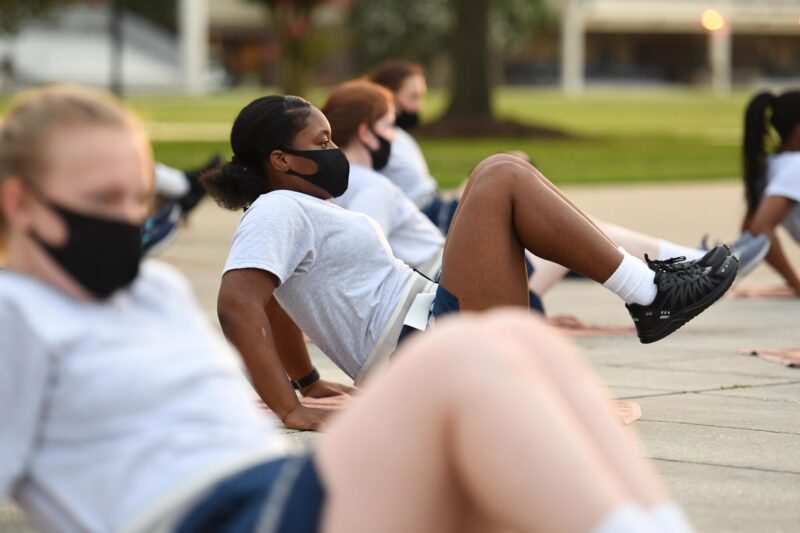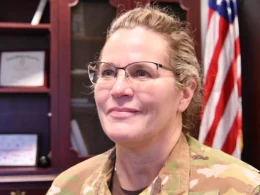FALLS CHURCH, Va. —
May is National Physical Fitness Month and the Air Force Medical Service has been concerned about the fitness and overall readiness of its members throughout its history.
In a chapter dedicated to the Air Service in the Army’s clinical history of the First World War, physical standards were noted as the first item of concern. In World War II, the Army Air Forces established its physical fitness program as a function of the Assistant Chief of the Air Staff for Personnel and charged line commanders to ensure the conduct of the program at the group level. This was where special service personnel with physical education qualifications acted as athletic instructors.
Studies under the supervision of the former School of Aviation Medicine sought to improve methods for developing and measuring physical fitness. Findings included the notes that group competitive sports were preferable since they would have the additional effect of supporting morale, the development of specialized “aviation calisthenics,” and the development of a standard test consisting of sit-ups, pull-ups, and a 300-yard shuttle run. Notes on these studies in the Air Surgeon’s Bulletin from 1945 indicated a debate regarding exercise frequency, suggesting that fitness scores were not much different in groups engaged in physical training six days per week versus three days per week.
With the establishment of an independent Air Force and then its own medical service in 1949, Air Force standards followed in 1951 replacing all the previous Army physical standards. Nevertheless, a 1959 study suggested that the Air Force’s fitness programs were ineffective. In the early 1960s, the service adopted the “Five Basic Exercises” program for men, or 5BX, and the “Ten Basic Exercises” program for women, or XBX. These programs required no special equipment and could be accomplished in eleven minutes. Looking back on the era, former Air Force Surgeon General, Lt. Gen. Alexander Sloan remarked, “A lot of guys played golf. There was really no fitness facility to make fitness easy.”
In the late 1960s, with greater numbers of personnel deploying to austere locations overseas, there was renewed concern regarding physical fitness and dissatisfaction with the 5BX program. A new round of studies at Wilford Hall led by former flight surgeon and the person attributed with coining the term, “aerobics,” Lt. Col. Kenneth Cooper, and championed by former U.S. Air Force Surgeon General, Lt. Gen. Richard Bohannon, resulted in a new Aerobics Physical Fitness Program which was approved by the Chief of Staff of the Air Force in 1969. The new program required a 1.5-mile run. With this new addition, debate reigned over the next two decades regarding what would qualify as a passing score, how often tests should occur, at what ages, how to prevent overexertion on the run, and whether it could be substituted with a three mile walk.
In the early 1990s, the Air Force introduced bicycle ergometry as a safer and more reliable method of testing aerobic capacity. At the same time, there was a push to implement Health and Wellness Centers throughout the Air Force which could serve as “a one-stop-shop” for fitness assessment and health promotion services and link fitness and readiness. In the early 21st century, there was a new emphasis on muscular fitness and concern that the energy devoted to fitness be “consistent with the growing demands of our warrior culture.” This culminated with the Chief of Staff of the Air Force, Gen. John P. Jumper’s “Fit to Fight” program which took effect in 2004 with the return of the 1.5-mile run as the cardiovascular test.
In 2014, a new Health Promotion Concept of Operations reinforced the notion that the Fitness Program is a commander’s program rather than an AFMS program. This moved the Air Force away from a facilities-based model and the Health and Wellness Centers in favor of shared responsibility for health promotion on the part of all medics as well as the line leadership.
Overall, particularly given the recently released Body Composition Program, one might be tempted to sum up the history of Air Force fitness as a story in which the only constant is change. But that would be to overlook the sustained interest on the part of the AFMS, the line leadership and their predecessors over more than a century in ensuring the physical fitness of the force, with course corrections in the face of better data, practical experience, and changing circumstances.










